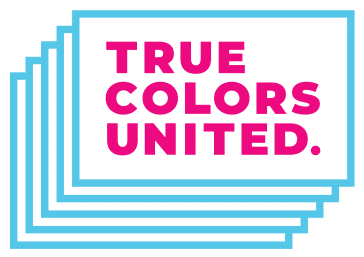Our Issue.
In the United States, 4.2 million youth experience homelessness each year. Together, we can change that.
LGBTQ+ Youth are 120% More Likely to Experience Homelessness.
According to a study from Chapin Hall at the University of Chicago, LGBTQ+ young people are 120% more likely to experience homelessness than non-LGBTQ+ youth. Right off the bat, these young people are presented with an uneven playing field. True Colors United is working to ensure LGBTQ+ young people are centered in the solutions so that no young people are left out in the movement to end youth homelessness.
"It is important to create a setting where young people feel like everyone is working collectively."
Why Do LGBTQ+ Youth Experience Homelessness?
Family conflict is the most common cause of all youth homelessness. For LGBTQ+ youth in particular, family conflict often is related to a young person’s sexual orientation or gender identity.
While family rejection is the most frequently cited reason LGBTQ+ youth experience homelessness, it’s not the only one. Additional reasons include aging out of the foster care system, poverty, and conflict in the home not related to identity. Often, it’s not one thing that causes homelessness, but a combination of many.
"I feel that I was placed here on this earth to advocate the best way I can."
Everyone has a role in ending LGBTQ+ youth homelessness.
People often think that, because they don’t work at a shelter or housing agency, they don’t have a role to play in the effort to end LGBTQ+ youth homelessness. The reality is that everyone can make a difference! LGBTQ+ youth experiencing homelessness interact with more than just the people working at shelters. They also go to coffee shops and libraries, ride public transportation, go to school, use social media… To put it simply: They live life! We all share the same world – and we all could do a better job at making that world a better place for young people.
"When we center the experiences of the most marginalized, we're able to improve the lives of all youth.”
Needs of LGBQ Youth
What do lesbian gay bisexual and questioning youth experiencing homelessness need? Our reseach identified housing and identity-related supports as the two greatest needs for lesbian, gay, bisexual, and questioning youth experiencing homelessness.
Needs of Transgender Youth
For transgender youth, housing was the most frequently cited need, followed by access to transition-related supports. Transition-related supports include access to legal support, name/gender marker change, access to healthcare specific to transgender youth, access to hormones, and emotional support.
